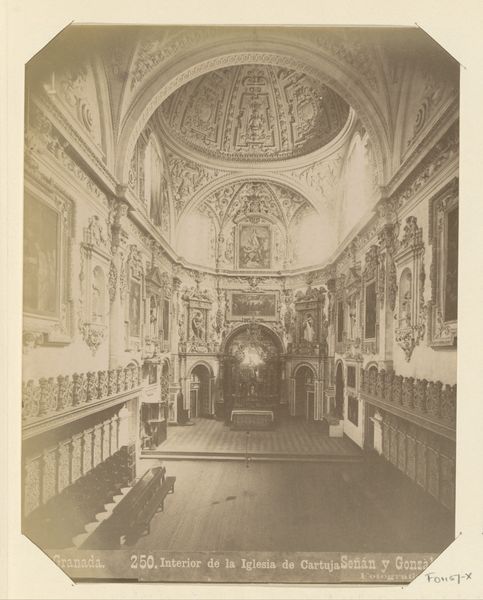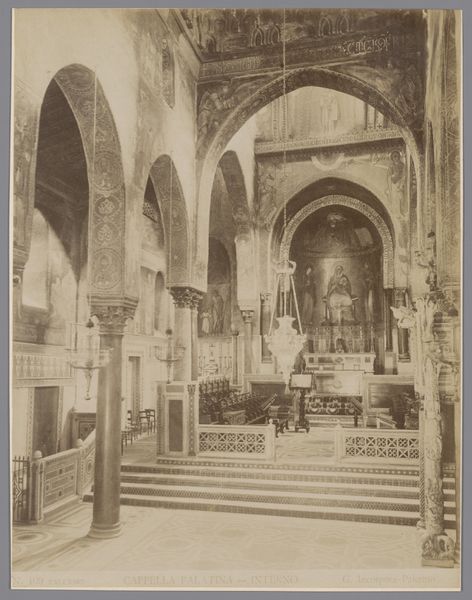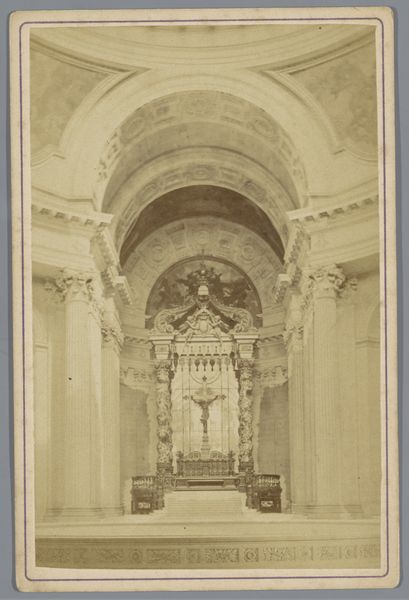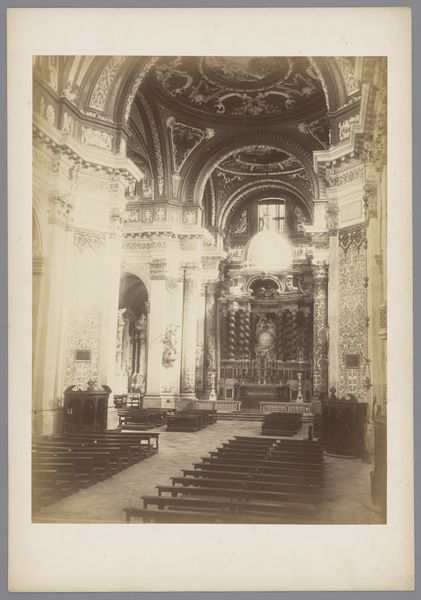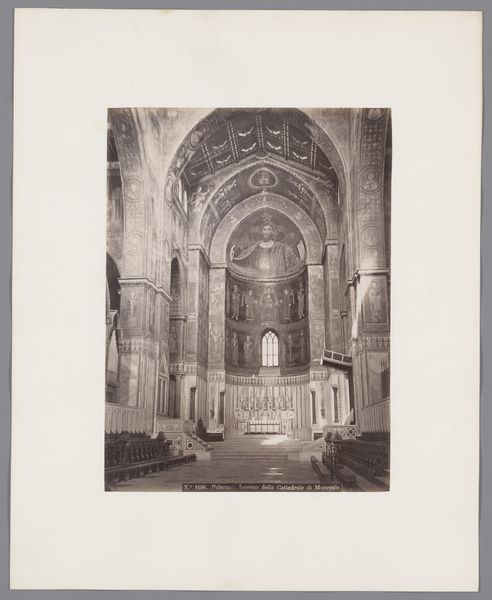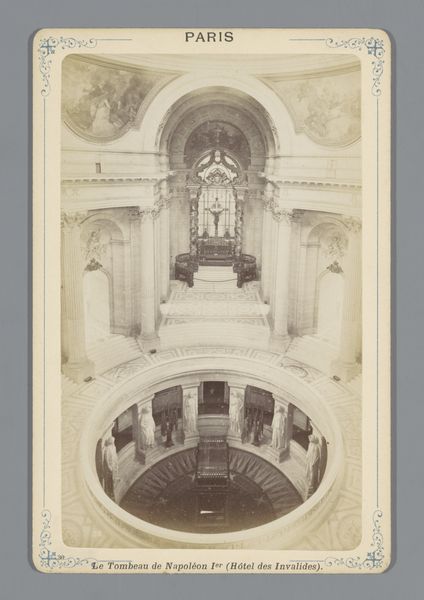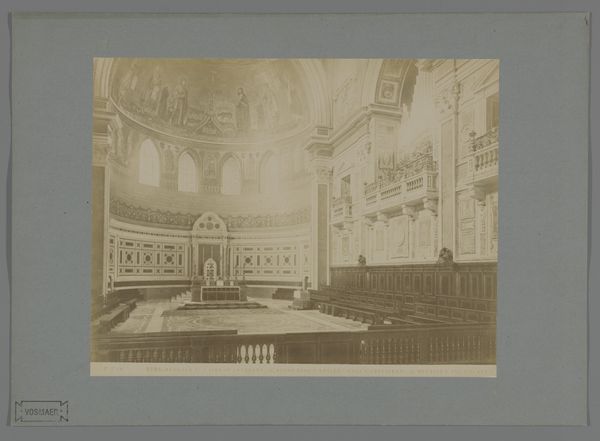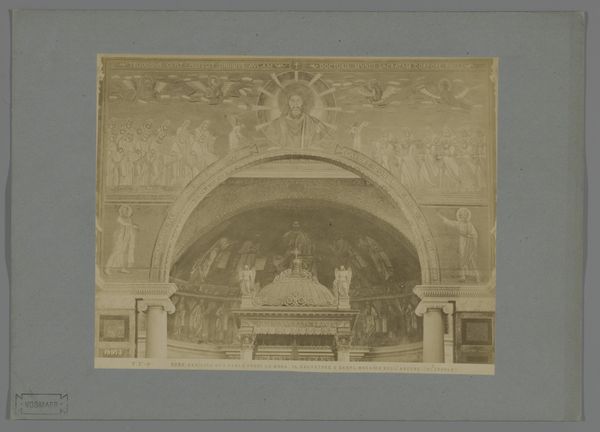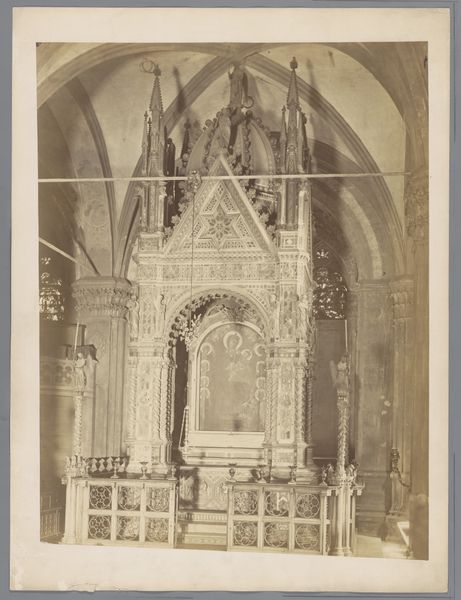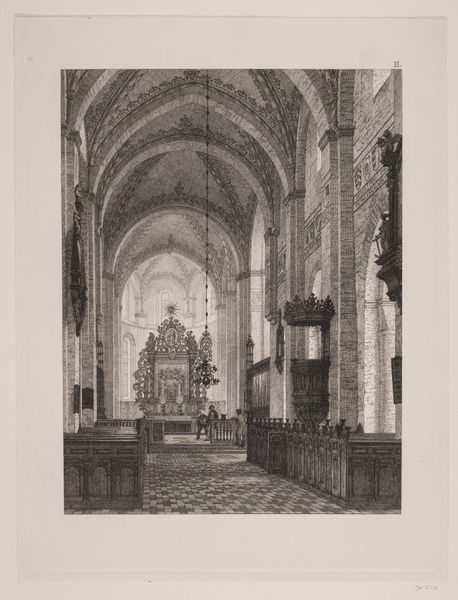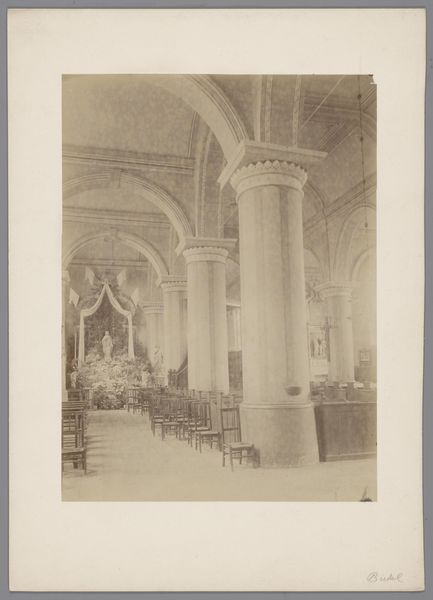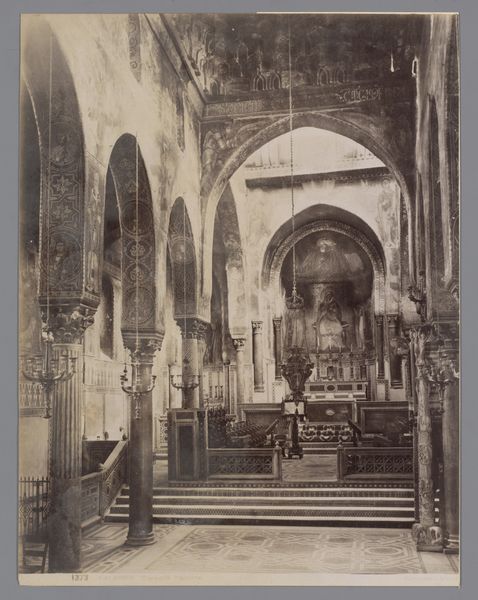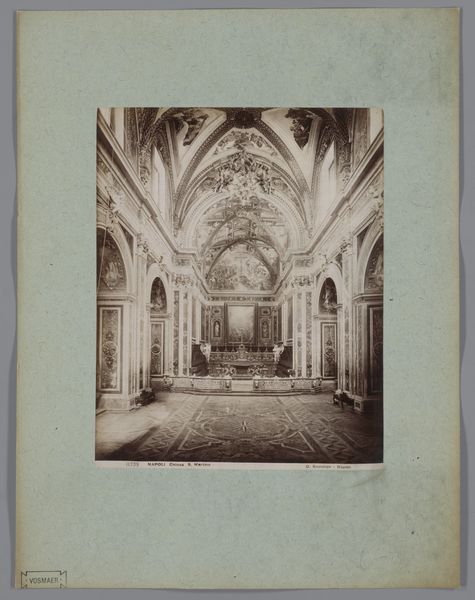
Altaar van de zogenaamde Griekse Kapel in de Russisch-orthodoxe Kerk op de Neroberg, Wiesbaden, Duitsland 1897
0:00
0:00
photography, gelatin-silver-print, architecture
#
byzantine-art
#
landscape
#
archive photography
#
photography
#
historical photography
#
gelatin-silver-print
#
19th century
#
architecture
Dimensions: height 282 mm, width 225 mm, height 508 mm, width 330 mm
Copyright: Rijks Museum: Open Domain
Curator: This photograph, taken around 1897 by Mondel & Jacob, captures the altar of what was then called the Greek Chapel within the Russian Orthodox Church in Neroberg, Wiesbaden, Germany. It's a gelatin silver print, a common medium at the time. What's your first impression? Editor: Profound stillness, an echo of centuries maybe. There's a lot of ornamentation but it all feels quite reserved, muted almost by the photographic process itself. The light has a gentle quality that gives the chapel an almost ghostly elegance. Curator: That's interesting because the process itself involved quite deliberate labour. Creating the silver gelatin emulsion, coating the paper, making the exposure with large format cameras and then meticulously developing the print, would have involved specific skills and conditions to produce an aesthetic result with good tonal range and stability. Think of the craftsman's hands here! Editor: Yes, hands creating something ethereal. Those sculpted figures looking down, what do you make of the clear devotion poured into such architectural and artistic undertaking? It feels intensely intimate and public simultaneously. Curator: Consider, too, the cultural context. Late 19th century, rising industrialisation, imperial ambition: a Russian Orthodox presence asserting itself through magnificent building within a changing European landscape. Gelatin silver prints became a crucial tool of documentation, preservation, and cultural dissemination in that era, capturing monuments but also reinforcing hierarchies of faith and culture. Editor: But is that all? Perhaps it’s the soft sepia tones, but this image evokes in me a sense of longing and maybe, impermanence. Knowing it’s a historical document, a glimpse into a world changed, stirs up those tender melancholy feelings. It’s strange how a static image can resonate with something so… alive. Curator: Absolutely, this gelatin silver print acts as a container and a conveyor, bringing us face to face with tangible traces of time, the development and diffusion of technologies, human beliefs and societal structures which both consciously and unconsciously give shape to the spaces that surround and in-turn define us. Editor: I think, for me, this piece brings together devotion and craft so powerfully it becomes almost transcendental. The artists captured, in a single moment, so many layers of intention, materiality, and history.
Comments
No comments
Be the first to comment and join the conversation on the ultimate creative platform.
